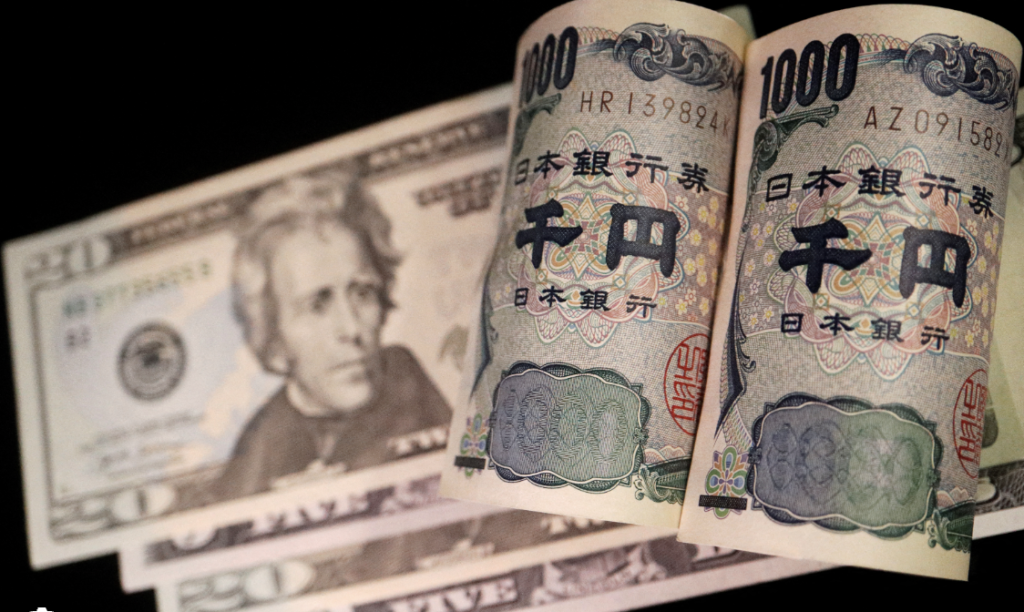As the bell rang to commence the trading day, the stock market surged, bringing a wave of optimism to investors. This rally at the market open is closely tied to the ongoing dynamics between the US dollar and the Japanese yen. Let’s delve into the factors driving this bullish trend.
US Dollar Strength and Market Repercussions
The US dollar has recently shown increased strength against the Japanese yen, sparking enthusiasm in the stock market. The currency pair’s performance often serves as a barometer for economic health and investor sentiment.
- Dollar Strength: A robust US dollar generally reflects confidence in the American economy. Investors often flock to US assets, viewing them as safe havens during uncertain times.
- Impact on Exporters: A stronger dollar can impact American exporters negatively, as their goods become more expensive for foreign buyers. However, it appears that the current surge in stock prices indicates a more optimistic view on the broader economic landscape.
Market analysts attribute the dollar’s strength to a combination of ***hawkish Federal Reserve policies*** and positive economic indicators, which have bolstered investor confidence in the US economy. These dynamics are pivotal, as they influence capital flows, affecting stock valuations directly.
Japanese Yen and Its Economic Implications
Conversely, the Japanese yen has exhibited some weakness, affecting market sentiment in an intricate dance of economic factors.
- Yen Weakness: Typically, a weaker yen can be beneficial for Japanese exporters, making their goods cheaper on the global market. However, this trend has also underscored the challenges faced by the Bank of Japan, which has been striving to stimulate economic growth with limited success.
- Investors’ Perspective: Investors are closely monitoring the Bank of Japan’s moves and the yen’s trajectory, impacting their trading decisions. This aspect of currency valuation plays a crucial role in investors’ allocation strategies to Japanese equities versus other global markets.
Inflation and Interest Rates

The economic tug-of-war between inflation concerns and interest rate policies adds another layer of complexity to the current market dynamics.
Inflation: Rising inflation has been a global concern, with central banks worldwide grappling with this pressing issue. The US, in particular, has experienced higher inflation rates, which has led the Federal Reserve to adopt a more **hawkish stance** on monetary policy.
Interest Rates: The Federal Reserve’s tightening of monetary policy, signaled through potential interest rate hikes, has strengthened the dollar. Higher interest rates make the US a more attractive destination for investment, drawing capital into American assets.
Geopolitical Factors and Their Influence
Geopolitical developments remain a critical aspect affecting the financial markets. Current geopolitical stability, particularly in regions like Asia and Europe, has contributed to positive investor sentiment. Trade relations, international cooperation, and global economic recovery play pivotal roles in shaping market trajectories.
- US-China Relations: Improved trade dialogues between the US and China have reduced uncertainties, allowing investors to focus more on growth potential rather than geopolitical risks.
- European Economy: The European economy’s recovery, post-pandemic, has also impacted market sentiments positively. Collaboration among European nations on economic policies has instilled confidence among global investors.
With stocks rallying and investor sentiment leaning towards optimism, the financial markets are showcasing resilience and potential for growth. The interplay between the US dollar and the Japanese yen continues to be a vital aspect of market dynamics, influencing investment strategies and economic outlooks.
Despite the complexities and challenges, the current market sentiment underscores a positive trajectory for equities. **The robust performances in key sectors, coupled with favorable economic indicators,** paint a promising picture for the future. Steadfast investors and market participants can take heart in these developments, confident that the foundations of the financial markets remain solid.